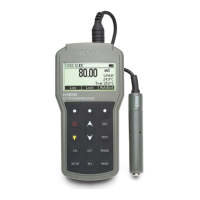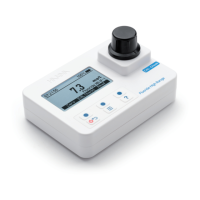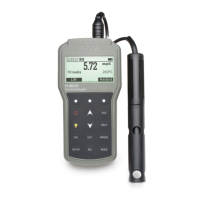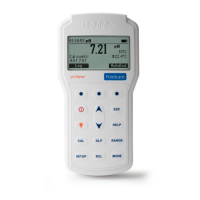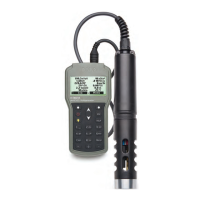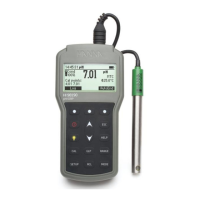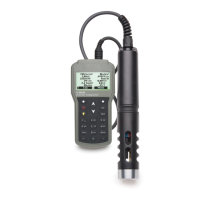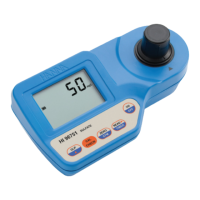11
OPERATIONAL GUIDE
The LCD displays the pH value (automatically compensated
for temperature) on the primary LCD, the ORP value on
the secondary LCD, while the third LCD line displays the
sample temperature. If measurements are taken in different
samples successively, rinse the probe tip thoroughly
†
to elimi‑
nate cross‑contamination. For better accuracy, frequent cal‑
ibration of the pH sensor with the meter is recommended. In
addition, the meter must be recalibrated whenever:
a) The pH electrode is replaced.
b) After testing aggressive chemicals.
c) Where high accuracy is required.
d) At least once a month.
e) After cleaning the sensor.
†
The probe tip should be rinsed with purified water (reverse osmosis,
distilled, or deionized) before and after placing in any solution
(buffer, storage, or sample).
pH calibration
Enter calibration mode while in
pH measurement mode. Place the
sensor into the first calibration buffer.
If performing a two‑point calibration,
use pH 7.01 (pH 6.86 for NIST) buffer first. The meter will
enter the calibration mode, displaying “pH 7.01 USE”
and tag blinking (or “pH 6.86 USE” for NIST).
Follow directions for single and two‑point calibration below:
Single-point calibration
1. Place the probe in any buffer from the selected buffer
set. The meter will automatically recognize the buffer value.
2. If the buffer is not recognized or the calibration offset
is out of the accepted range “---- WRONG“ is displayed.
3. If the buffer is recognized “REC“ is displayed then
“WAIT“ until the calibration is accepted.
If using pH 7.01 (or pH 6.86 for NIST), after acceptance
of the buffer press any key to exit. The ”SAVE” message is
displayed and the meter returns to pH measurement mode.
If using pH 4.01 or 10.01 (or pH 9.18 for NIST) buffer
the ”SAVE” message is displayed and meter returns to
pH measurement mode.
Impex Produkter

